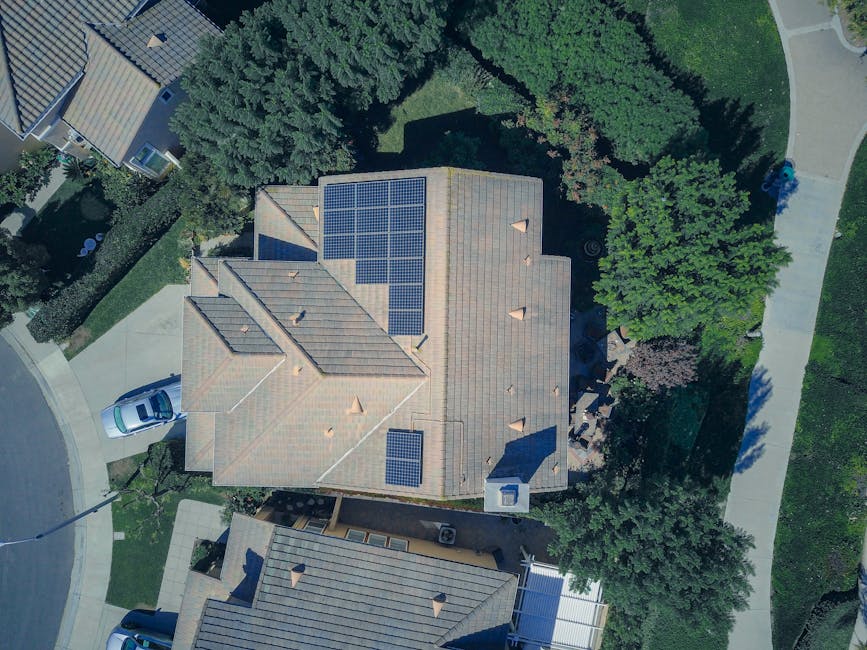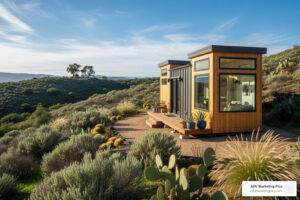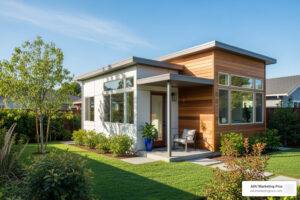Embracing the Tiny House Revolution in California
Looking for Tiny house builders California? Here are the top 9 builders to consider:
- California Tiny House – Family-owned since 2014, focuses on advocacy and education
- Pacifica Tiny Homes – Built over 300 homes, offers models starting at $47,900
- Forever Tiny Homes – Woman-owned with 24,000 sq ft facility in Cottonwood
- Sierra Tiny Houses – Offers models from $68,340 with DIY kit options
- Central Coast Tiny Homes – Features patented pop-out designs (295-400 sq ft)
- Zen Tiny Homes – San Diego-based with off-grid capabilities
- Tumbleweed Tiny Houses – RVIA-certified green builds with nationwide delivery
- Artistree Home – Specializes in treehouse aesthetics with sustainability focus
- Tiny Topanga – Offers both tiny homes and van conversions
The Tiny house builders California scene is booming as more residents accept downsized, sustainable living solutions. With housing costs skyrocketing across the Golden State, tiny homes represent a practical alternative that combines affordability with intentional living.
California leads the nation in tiny house adoption, with builders offering everything from rustic cabins to luxurious micro-mansions on wheels. These specialized construction teams craft homes typically ranging from 100 to 400 square feet, packed with smart storage solutions and multi-functional spaces.
Whether you’re looking for an accessory dwelling unit (ADU) for your backyard, a mobile tiny home on wheels, or a prefabricated modular unit, California’s tiny house builders have pioneered innovative approaches to small-space living without sacrificing comfort or style.
The state’s progressive legislation, including the adoption of IRC Appendix Q in 2020, has made it easier than ever to place tiny homes as legal dwellings, opening opportunities for homeowners seeking rental income, multi-generational living solutions, or simply a simpler lifestyle with a smaller environmental footprint.

Quick Tiny house builders California terms:
Tiny House Builders California: 9 Teams Crafting Big Dreams in Small Spaces
The Golden State has become a vibrant hub for tiny house innovation, where skilled craftspeople are redefining what’s possible in compact spaces. From mobile tiny homes on wheels to permanent backyard ADUs, these Tiny house builders California teams are creating dwellings that prove you don’t need massive square footage to live beautifully.

Let’s meet the creative minds behind California’s tiny house movement – each bringing their unique vision to small-space living:
California Tiny House
Nestled in Fresno, this family-owned gem has been championing the tiny house movement since 2014. More than just builders, they’re passionate advocates shaping the entire industry.
What makes them special? Beyond crafting beautiful homes, they’re actively writing the future of tiny house living through education and advocacy. They’ve spent over a decade perfecting their craft while simultaneously working with legislators to make tiny homes more accessible statewide.
Their commitment extends to the next generation too – partnering with CTE and ROP school programs to introduce tiny house construction curricula. When industry standards are being written, you’ll find them at the table, serving on ICC tiny house standards committees for standards 1200, 1205, and 1215.
Pacifica Tiny Homes
With over 300 tiny homes in their portfolio, Pacifica has mastered the art of creating affordable quality on a remarkable scale. Their team completes around 10 homes monthly, making them one of the most prolific Tiny house builders California residents turn to when seeking budget-friendly options.
“We never compromise on quality despite being among the most affordable in the nation,” they proudly state – and their pricing backs this up. Their charming Bay Cottage starts at just $47,900, while their Tiny Victorian begins at $49,900. Families looking for more space can explore their 2.0 models starting at $79,900.
What’s particularly helpful for buyers is how they classify their tiny homes as RVs with VIN assignments, making insurance and financing more straightforward for new owners.
Forever Tiny Homes
Woman-owned and safety-focused, Forever Tiny Homes operates from an impressive 24,000 square foot facility in Cottonwood. Their approach prioritizes durability and fire resistance – crucial considerations in California’s climate.
Their attention to structural integrity is remarkable – they combine ring-shank nails with construction adhesive to create bonds three times stronger than traditional methods. Safety-conscious buyers appreciate their use of Class A fire-rated materials throughout and 24-gauge standing-seam metal roofs with 70% resin finish for longevity.
The technical details reveal a thoughtful approach: fiber cement board siding, tempered windows, and rigid 2″ EPS foam board insulation with integrated mylar heat shields all contribute to homes built to last generations.
Sierra Tiny Houses
Northern California’s Sierra Tiny Houses beautifully bridges the gap between professional craftsmanship and DIY enthusiasm. Their models range from cozy 223 square foot layouts to more spacious 309 square foot designs, with base models starting at $68,340.
What sets them apart is their flexibility – they’re happy to build your dream tiny home, sell you a DIY kit to create it yourself, or provide the perfect trailer as an official dealer for Trailer Made Trailers. Their popular designs include the Roomy Retreat (in both 24′ and 28′ versions), the charming Craftsman Cottage, and the breezy Beach Bungalow – each thoughtfully designed with lofted areas to maximize living space.
Central Coast Tiny Homes
Innovation stars at Central Coast, where they’ve developed a game-changing patented pop-out technology. This clever design allows their homes to travel at the standard 8.5-foot road width but expand to an impressive 14-17 feet once parked.
This breakthrough solves one of tiny living’s biggest challenges – limited width – creating interiors that feel surprisingly spacious. Their models range from 295 to 400 square feet, with the Corbett Canyon Max standing as one of the market’s largest luxury tiny homes. Inside, you’ll find high-end finishes that rival traditional homes, proving that downsizing doesn’t mean downgrading.
Zen Tiny Homes
Bringing Southern California’s relaxed coastal vibe to tiny living, Encinitas-based Zen Tiny Homes creates spaces that feel both peaceful and functional. Their media-featured designs emphasize sustainability with off-grid capabilities that don’t sacrifice comfort.
What truly distinguishes them is their deeply personalized approach – each home reflects its owner’s unique vision rather than following cookie-cutter templates. Their San Diego roots shine through in designs that accept natural light and indoor-outdoor flow, perfect for California’s climate.
Tumbleweed Tiny Houses
A nationally recognized name with strong California roots, Tumbleweed offers an efficient approach to tiny house creation. Their RVIA-certified green tiny houses come in three standardized sizes: Teeny (217 ft² plus loft), Tiny (249 ft² plus loft), and Big Tiny (390 ft² plus loft).
Their user-friendly online design tool provides instant price quotes as you customize, making the planning process transparent and accessible. They deliver to all 50 states and offer payment plans with down payments as low as zero for qualified buyers – removing financial barriers to tiny living.
Artistree Home
In the redwood-rich community of Occidental, Artistree Home creates tiny dwellings that feel like natural extensions of the forest. Their distinctive treehouse-inspired designs bring a touch of whimsy to functional living spaces.
What truly warms the heart is their commitment to giving back – they dedicate 10% of profits to forest restoration in Sonoma County, making each tiny home purchase an investment in environmental stewardship. Their custom retreat-style designs focus on creating peaceful sanctuaries using sustainable materials and building practices.
Tiny Topanga
Capturing the free-spirited essence of its namesake Los Angeles County community, Tiny Topanga offers both stationary tiny houses and van conversions. Their designs embody that distinctive “Topanga vibe” – a blend of bohemian warmth and practical functionality.
Their reach extends beyond California to Texas and Pennsylvania, with a straightforward four-step purchasing process: consultation, plan design, build, and delivery. More than just creating homes, they’re crafting vehicles for a lifestyle shift toward simplicity and freedom.
Watch Pacifica Tiny Homes video tours
From Price Tag to Move-In: Cost, Customization & Legal Steps

Turning your tiny house dreams into reality involves more than just picking a pretty design. When working with Tiny house builders California, understanding the journey from initial concept to that magical move-in day helps ensure your tiny living transition goes smoothly.
Cost Breakdown & Financing Options
Let’s talk money—because tiny doesn’t always mean tiny price tags. California’s tiny homes come in various budget tiers that reflect their craftsmanship and features:
Starting with entry-level models at $47,900-$70,000 (Pacifica’s charming Bay Cottage starts at just $47,900), these provide affordable entry points into tiny living. Moving up, mid-range models between $70,000-$100,000 offer more space and features, like Sierra’s Roomy Retreat 28′ at $79,900. For those wanting all the bells and whistles, luxury custom builds range from $100,000-$150,000+, especially when including pop-out expansions or high-end finishes.
Don’t forget the “hidden” costs that sometimes surprise new tiny homeowners: land preparation ($3,000-$10,000 for ADU placement), connecting utilities ($1,500-$5,000), delivery to your property ($900-$3,000 depending on distance), and those inevitable permits and inspections ($1,000-$5,000, with wide variation between California jurisdictions).
Financing a tiny home has become easier as the movement grows. RV loans work perfectly for RVIA-certified homes on wheels, typically offering 10-15 year terms at reasonable rates. Personal loans fill the gap for non-certified tiny homes, while ADU-specific financing programs are ideal for permanent foundation-based tiny houses. Many California builders have even arranged zero-down payment options for qualified buyers, and homeowners adding a tiny ADU might leverage home equity loans to fund their project.
“We’ve seen financing options expand dramatically in the last three years,” says one California builder. “Banks are finally recognizing tiny homes as legitimate housing solutions.”
Buying Process Step-by-Step—Tiny House Builders California
Working with Tiny house builders California typically follows a journey that combines the excitement of home building with the intimacy of creating a perfectly custom small space:
The trip begins with an initial consultation where you’ll discuss your vision, budget constraints, and how you plan to use your tiny home. This is your chance to share your Pinterest boards and dream features!
Next comes design selection and customization, where you’ll either choose from the builder’s standard models or create something uniquely yours. Most builders require a contract and deposit ($1,000-$5,000) to secure your build slot—popular builders often have waiting lists, so this step locks in your timeline.
After finalizing and approving your designs, the real magic happens during the production phases. Your home takes shape through careful trailer preparation, precise framing, installation of utilities, insulation, and finally the interior and exterior finishes that make it feel like home. Throughout this process, expect regular inspections to ensure everything meets California’s strict building standards.
The most exciting day comes with delivery and setup, when your tiny home arrives at its destination. After connecting utilities and making final adjustments, you’ll have a final walkthrough where the builder explains all systems and maintenance requirements.
From contract to keys, most Tiny house builders California complete builds within 3-9 months, though custom homes with special features might take longer. “Patience pays off,” as one tiny homeowner told us. “Those extra weeks waiting for my custom murphy bed system were totally worth it!”
Standard Features & Materials
California’s tiny home builders have acceptd materials that make sense for the state’s climate challenges and sustainability goals:
The backbone of most tiny homes includes SIPs (Structural Insulated Panels) that provide superior insulation and strength while reducing build time. Douglas fir framing offers the structural integrity needed for homes that might travel occasionally, while metal roofing (typically 24-gauge standing-seam) provides decades of protection with minimal maintenance.
With California’s wildfire concerns, many builders prioritize fiber cement board siding with Class A fire ratings. All windows are tempered glass—not just for safety codes but because they’re four times stronger than standard glass, important for homes that might travel.
Inside these compact wonders, you’ll find thoughtful touches like space-saving appliances sized appropriately for tiny living, multi-functional furniture that transforms to serve different needs throughout the day, and durable quartz or solid surface countertops that withstand daily use without the maintenance natural stone requires.
Most builders now include eco-friendly insulation options like wool, recycled denim, or 3M Thinsulate as standard features, along with low-VOC finishes that maintain healthy indoor air quality in small spaces. LED lighting comes standard nearly everywhere, reducing both energy use and heat output.
Beyond these basics, California’s tiny home market has evolved to offer impressive upgrades like integrated solar systems, composting toilets that save water, tankless water heaters for endless hot showers, and luxury bathroom fixtures that make compact spaces feel like high-end spas.
As one builder explained, “We’ve learned that tiny house dwellers often want fewer things, but better things. Quality matters more when every item is visible and used daily.”
More info about ADU Construction Cost
Going Green & Getting There: Sustainability, Financing, Delivery
Sustainability isn’t just a buzzword for Tiny house builders California companies—it’s woven into the very fabric of their construction philosophy. These builders are creating homes that tread lightly on the planet while still delivering comfort and style.

When you step into a modern California tiny home, you’ll likely find an impressive array of eco-friendly features. High R-value insulation keeps these small spaces cozy while minimizing energy use. LED lighting comes standard, using a fraction of the electricity of traditional bulbs. Many builders pre-wire homes for solar power systems, making the transition to renewable energy seamless for homeowners ready to make that leap.
Water conservation plays a starring role too. Low-flow fixtures reduce water usage without sacrificing performance, while optional greywater systems and rainwater collection setups take sustainability to the next level. The materials themselves tell a green story—reclaimed wood adds character while reducing demand for new lumber, and eco-friendly insulation options improve indoor air quality.
“Our clients often tell us that reducing their environmental footprint was a primary motivation for going tiny,” shares one California builder. “We’re proud to help them achieve that goal through thoughtful design and material choices.”
The factory-built nature of tiny homes also contributes to their green credentials. Precision cutting and careful material planning in controlled environments significantly reduce construction waste compared to traditional on-site building methods.
Getting your tiny home from the builder to your property is another important consideration. Most Tiny house builders California companies have delivery down to a science, with fees typically ranging from $900 to $3,000 depending on distance and complexity. Some builders like Pacifica occasionally offer promotional delivery rates that can save you money during certain times of the year.
For homes on wheels, standard towing equipment usually handles the job smoothly. If you’re placing a larger or permanent structure, you might need specialized transportation and crane services for proper placement. Many builders will coordinate these logistics for you, ensuring your tiny home arrives safely and gets properly situated.
More info about Eco-Friendly Small Homes
Certifications & Warranty
When researching Tiny house builders California options, paying attention to certifications and warranties can save you headaches down the road. These credentials aren’t just fancy badges—they’re your assurance of quality and compliance with industry standards.
RVIA Certification stands as the gold standard for tiny houses on wheels, opening doors to conventional RV financing and insurance options. Some builders may instead carry CSA certification, which serves a similar purpose. For permanent tiny structures, look for ICC Appendix Q compliance, which addresses building code requirements specific to tiny houses.
Regional associations like the Pacific West Tiny Homes Association promote quality standards among local builders. Many companies also highlight Energy Star compliance for their appliances and systems, ensuring your tiny home runs efficiently.
Warranty coverage varies significantly between builders. Structural warranties typically range from 1-10 years, while workmanship guarantees for non-structural elements often cover 1-3 years. Appliances usually carry manufacturer warranties of 1-2 years.
Forward-thinking builders like Forever Tiny Homes emphasize their compliance with technical standards such as NFPA 1192 (2018), ANSI A119.5 (2015), and NEC 551/552 (2017). While these might sound like alphabet soup to the average buyer, they represent important safety and quality benchmarks that protect your investment.
Payment Plans & After-Sale Support
The financial journey of purchasing your tiny home should be as smooth as the physical one. Many Tiny house builders California companies have created buyer-friendly payment structures that make the process manageable.
Most builders start with a deposit of $1,000-$5,000 to secure your build slot in their production schedule. From there, you’ll typically make 2-3 progress payments tied to construction milestones, with final payment due upon completion before delivery. This staged approach helps make the purchase more manageable for many buyers.
Financing options have expanded dramatically in recent years. Some builders like Tumbleweed offer zero-down loans for qualified buyers, while others have partnerships with lenders who understand the unique nature of tiny homes. For those using their tiny home as an ADU, specialized financing options leverage the income-producing potential of these structures.
The relationship with your builder shouldn’t end at delivery. Quality companies provide comprehensive after-sale support, including detailed owner’s manuals and maintenance guides that help you understand the unique systems in your tiny home. Many builders now offer customer portals with easy access to documentation and support resources.
Warranty service coordination, maintenance recommendations, and even annual check-up services are becoming standard offerings among leading California tiny home builders. These ongoing relationships help ensure your tiny home performs beautifully for years to come.
“We see ourselves as partners in our clients’ tiny living journey,” explains one builder. “From financing to long-term maintenance, we’re here to make the transition as smooth as possible.”
Frequently Asked Questions about Tiny House Builders California
Thinking about going tiny in the Golden State? You’re not alone! As more Californians accept compact living, we’re fielding lots of questions about the ins and outs of tiny homes. Let’s tackle some of the most common ones.
How much does a tiny house cost in California?
When it comes to Tiny house builders California, pricing varies widely based on your dreams and needs. Entry-level models like Pacifica’s charming Bay Cottage start around $47,900, while mid-range options such as Sierra’s Roomy Retreat 28′ will set you back about $79,900. If you’re dreaming of luxury features like pop-out extensions or high-end finishes, expect to invest $100,000 to $150,000+.
Remember though, the sticker price isn’t the whole story. You’ll also need to budget for:
Land preparation ($3,000-$10,000), utility connections ($1,500-$5,000), delivery to your property ($900-$3,000), and those inevitable permits and inspections ($1,000-$5,000).
Don’t let these numbers scare you off! Most California builders understand that financing a tiny home is different from a traditional mortgage. They’ve developed partnerships with lenders who understand tiny homes, and many offer in-house financing options to help make your tiny dream an affordable reality.
Can a tiny home be an ADU anywhere in the state?
Good news! California has become increasingly tiny-friendly since January 2020, when the state mandated IRC Appendix Q for tiny houses statewide. This created a more consistent regulatory environment, but (there’s always a but, isn’t there?) local jurisdictions still have their say.
Your local authorities still control things like:
- How far your tiny home needs to be from property lines
- Standards for connecting to water, sewer, and electricity
- Foundation requirements for permanent structures
- Parking requirements
- Design reviews in some neighborhoods
Generally speaking, your tiny home can serve as an ADU in most California areas if it meets building codes (either as a permanent structure or with RVIA certification for tiny homes on wheels), connects properly to utilities, follows local zoning rules, and meets fire safety requirements.
Many Tiny house builders California companies have become experts at navigating this regulatory maze and can guide you through your specific local requirements. Some, like California Tiny House, have even helped shape the legislation that’s making tiny living more accessible throughout the state.
Want to learn more about size regulations? Check out How Big Can an ADU Be in California?
What licenses or certifications should I look for?
When shopping for your tiny home builder, certifications matter – they’re your assurance of quality, safety, and legitimacy. Here’s what to look for:
For the builder themselves, verify they have a contractor’s license (for permanent structures), RVIA membership and certification (for tiny houses on wheels), proper insurance and bonding, and DMV registration capabilities if you’re going mobile.
For the tiny house itself, RVIA certification is golden – it enables RV financing and insurance options. Alternatively, look for CSA certification. For mobile tiny homes, proper VIN assignment is essential. All homes should comply with ICC Appendix Q standards, and energy efficiency certifications are a plus.
Reputable Tiny house builders California companies like Forever Tiny Homes proudly display their credentials. They’ll handle all the technical details like DMV paperwork and VIN stamping in-house, making your journey to tiny living much smoother.
These certifications aren’t just paperwork – they ensure your tiny home is built to last, safe to live in, and easier to finance, insure, and legally place wherever you plan to call home.

Conclusion
The Tiny house builders California landscape is blossoming in exciting ways, creating innovative solutions for our state’s housing challenges. From basic starter models that won’t break the bank to stunning custom designs that redefine luxury in small spaces, these specialized builders are making tiny living more accessible to Californians from all walks of life.
What’s truly inspiring is how the movement continues to mature. We’re witnessing increasingly sophisticated designs, advanced construction techniques, and impressive sustainability features with each passing year. California’s forward-thinking approach to ADUs and tiny houses has created the perfect environment for these builders to innovate, developing solutions that tackle both housing affordability and environmental concerns head-on.
The nine builders we’ve highlighted represent the incredible diversity driving California’s tiny house industry forward. Whether you’re dreaming of a backyard ADU for rental income, a mobile tiny home for weekend trips, or a sustainable downsizing solution for your retirement, these builders offer options to match practically any vision and budget you might have.
If you’re seriously considering joining the tiny house movement, your journey begins with some thoughtful research. Most Tiny house builders California companies welcome visitors for tours, offer free consultations, and provide detailed information about their unique processes. Taking time to visit model homes and chat directly with builders will help ensure you find your perfect tiny house match.
Throughout California—from the foggy Bay Area to sun-soaked San Diego—we at ADU Marketing Pros help connect innovative builders and architects with folks searching for creative housing solutions. Our digital marketing approaches are specifically custom for companies specializing in ADUs and tiny homes, helping them reach the growing community of Californians interested in these alternative housing options.
More info about our ADU digital marketing strategies
As California continues to lead the tiny house revolution, these nine exceptional builders represent the very best our state has to offer. They’re not just constructing homes—they’re creating launching pads for simpler, more intentional, and often more affordable ways of living. The tiny house movement isn’t just about smaller spaces—it’s about bigger possibilities for how we choose to live.




